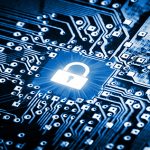An Overview Of LiFi Technology
Do you understand morse code? Maybe you do, or perhaps you don’t, but at least we have seen people trying to relay a message in morse code by turning a flashlight on and off.
The Li-Fi technology leverages a similar working principle to relay data and information, but the only catch here is the Li-Fi can do the same thing but a lot faster.
Still, confused? No worries, continue reading to clear all the confusion.
What Exactly Is The Li-Fi Technology?
The term Li-Fi stands for light fidelity, and this technology uses light to transmit data and information from one end to another. Initially proposed by a German scientist named Harald Hass, Li-Fi is ideal for facilitating high-speed wireless communication in any given geographical location. Furthermore, this technology has numerous benefits over traditional Wi-Fi technology, including ease of use, safety, higher bandwidth, and enhanced efficiency.
The Li-Fi technology leverages the unsurpassed speed of light to facilitate lightning-fast data transfer and communication. The demand for high-speed internet increases daily, and wireless technology has evolved effectively to suffice that demand. Li-Fi’s range of transmitting data is about a hundred times faster as compared to traditional Wi-Fi.
How Does Li-Fi Work?
As mentioned earlier, Li-Fi uses visible light to transmit data by leveraging the Visible Light Communication (VLC) system designed for data transmission. In simple terms, Li-Fi is equipped with a transmitter on one end with a receiver on the other end that uses light to transmit data. Every Li-Fi network is bi-directional, meaning that a downlink and uplink can be formed between the receivers and transmitter, making it ideal for high-speed internet communication. One important thing to understand here is that Li-Fi is a different way to deploy the internet, not a different way of getting the internet.
Further, the Li-Fi network has two different components, namely LED light source and Li-Fi enabled devices. Therefore let us take a comprehensive look at both the components:
- LED Light Source
Light sources that are already in use and light sources that are specially designed for the purpose are used by Li-Fi for data transmission. As LED lights are efficient and reliable, it makes them the ideal choice for data transmission. The light sources are fitted with infrared sensors that can detect both downlink and uplink signals with ease. Different techniques such as Power over Ethernet (POE) and Power-Line Communication (PLC) are used to supply data to the light fixtures that act as access points. As the light source emits pulses, the receiver captures and decodes the data.
- Li-Fi Enabled Devices
Every Li-Fi device is equipped with a receiver that acts as a photodiode that detects the signals within the light coming from the transmitter. The modulated pulses are captured by the detector and translate the pulses into data. Further, Li-Fi-enabled devices are equipped with infrared transmitters responsible for enabling seamless flow of data in both directions and sending data back to the source of light.
Li-Fi Vs. Wi-Fi
In simple terms, Li-Fi is the younger, more innovative, and less known sibling of Wi-Fi. While Li-Fi still has limited applications, that is not the case with Wi-Fi, as most of us rely on it to sustain good internet connections. The primary difference is that Wi-Fi uses radio frequencies to transmit data, while Li-Fi uses light to do the same thing faster. Therefore, it is highly likely that Li-Fi will replace Wi-Fi shortly.
Bottom Line
The demand for high-speed internet is not coming down anytime soon, and we need a more efficient way of transferring data and information. This means that Li-Fi being a technology of the future is here to stay and make an impact.
Further, we already have many eminent LiFiMAX products, such as the LiFiMAX that provides people with an easy and affordable way to leverage the capabilities of Li-Fi.











